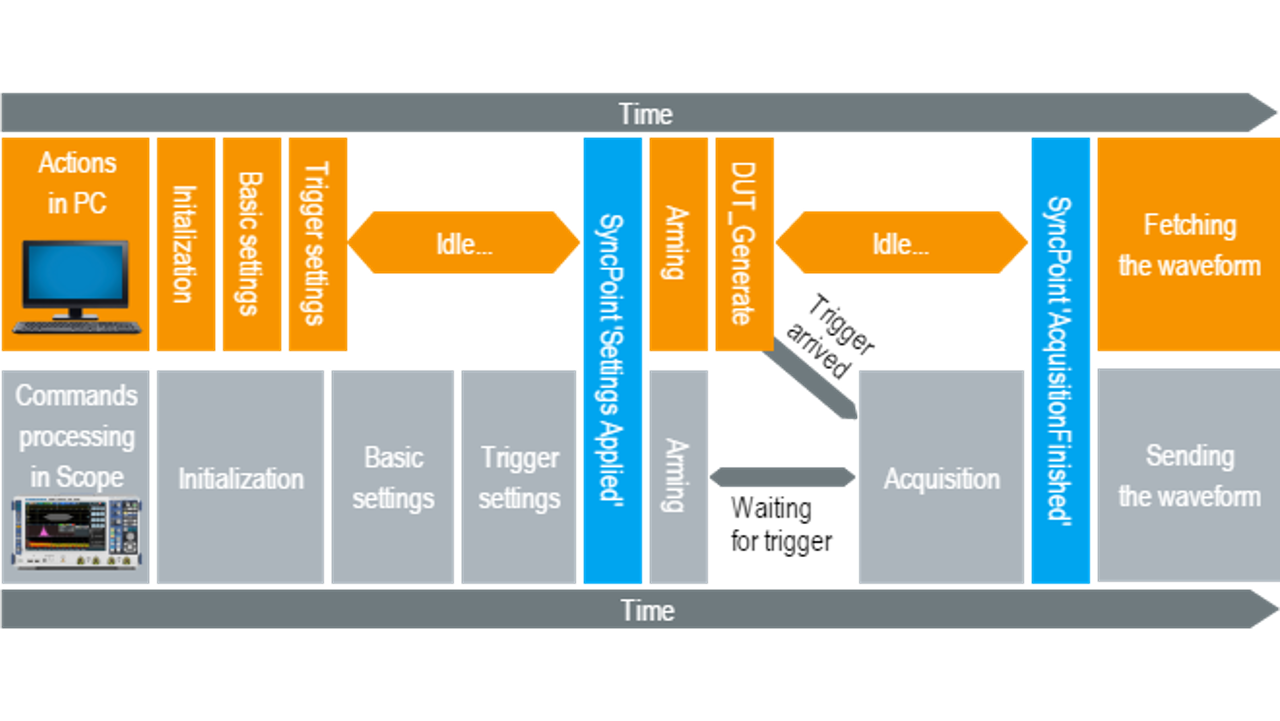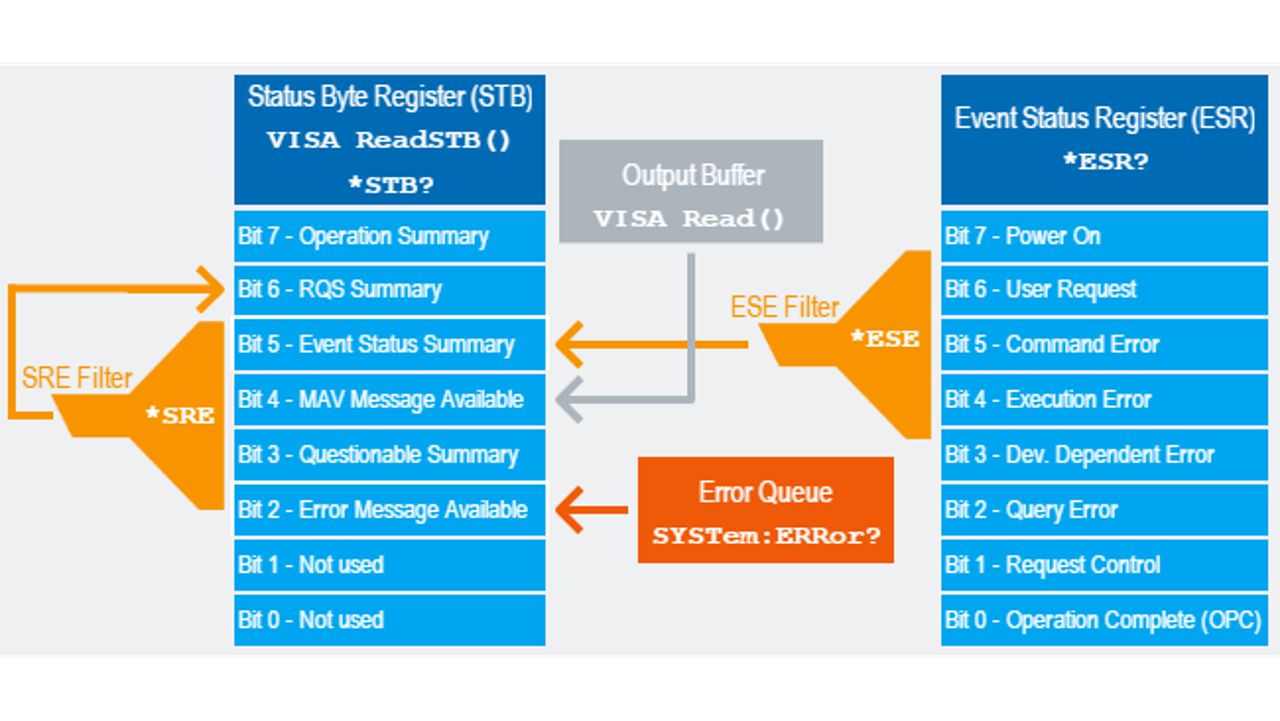6. Measurement Synchronization
Measurement synchronization is one of the most important points to keep in mind when writing any remote-control application. Neglecting this aspect of your program leads to unpredictable behavior, unrepeatable results and a lot of frustration. A clear sign of improper measurement synchronization is, when you have to insert fixed pauses into your application in order to get it running.
Let us first define Measurement Synchronization for the purpose of this chapter:
Today’s measurement instruments are complex devices with their own operating systems. Your measurement application does not have to care about the instrument's status all the time. Measurement synchronization is the method by which you make sure, that at important points of your program (SyncPoints), your instrument is in the state you expect.
An example of measurement synchronization with an oscilloscope and a DUT that generates a non-periodic signal:






